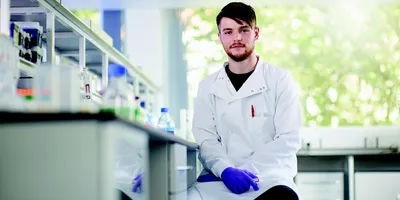Incubators and incubating shakers are relatively simple pieces of lab equipment. Acquiring them can be a challenge if you’re considering a pre-owned unit. To determine if you’re best suited for a new or used unit, there are a few variables to consider. Should you decide to go used, navigating the pre-owned equipment market comes with decisions and pitfalls of its own. If approached wisely and deliberately, buying a used incubator/shaker can be a painless process with excellent results.
New versus used: Weighing key factors
When deciding between going the new or pre-owned route for a new incubator/shaker, there are two factors to consider: configuration and budget.
Configuration
The more specific one’s application is, the harder it will be to find a pre-owned unit that meets all specifications. For instance, a researcher intending to culture a certain type of cell may require not just heating capabilities but also a certain shaking throw, a stackable configuration, and water-jacketing for temperature retention. These additional dimensions will quickly narrow down the incubators on the used market and may eradicate all the options entirely. “If you just need incubating and shaking, go for [used equipment]. And even if you need refrigeration, there’s quite a few refrigerated models out there,” says Nathan Arant, COO and purchasing manager of used lab equipment vendor New Life Scientific, Inc. “But if you’re starting to get really detailed, where [you’re saying] ‘I need this throw, I need three stacks, I need refrigeration, I need humidity, I need CO2,’ you’re just decreasing the probability of finding the right one [on the used market].”
In short, general-purpose incubators/shakers are better suited for being acquired secondhand.
Budget
It’s no secret that saving money is one of the primary reasons to buy used equipment. If you have a tight budget, acquiring a used one from a trustworthy vendor can save several thousands of dollars while still getting a tested, warranty-backed unit.
Benefits of buying used
Sustainability
Buying used equipment keeps it out of landfills. Until an incubator or shaker has died completely and repair isn’t viable for financial or mechanical reasons, it can be used by someone, somewhere.
Greater variety of selection
Instead of being confined to only what manufacturers currently offer, buying pre-owned frees you to shop across current and past generations. If current-generation models don’t quite suit your budget, you can likely find a model with comparable specifications at a more palatable price.
Shorter lead times
Depending on current demand, sometimes it may take weeks to receive equipment purchased from its manufacturer. Used equipment vendors can ship a unit out within a few days, regardless of current market circumstances.
In short, general-purpose incubators/shakers are better suited for being acquired secondhand.
While buying used comes with several benefits, treading the pre-owned lab equipment market can be treacherous. If you’ve weighed the factors and the balance fell in favor of buying a used incubator, here are some guidelines for shopping on the used market:
Navigating the used market
Have you ever walked into a thrift store, intent on getting something stylish at a discount, just to find that everything available is 30 years out of style? Without the right approach, shopping for used lab equipment can be a similar experience. The good stuff is snatched up by other shoppers before you get a chance to find it.
As such, the key to secondhand shopping is consistency. You need to continually monitor the market to catch the good deals. For this reason, you should begin keeping tabs on the market as early as possible. Even if you don’t plan on replacing your incubator for a few months, watch the market. This can be as simple as logging onto selling venues a few times a week and browsing around. Pay attention to which sellers seem most reputable, which offer warranties and guarantees, and which sellers most consistently have incubators/shakers that suit your needs.
As you start shopping, there will be a few factors to keep in mind: throughput, age, and jacket type.
Throughput
Your lab’s sample throughput will determine the format and size of the incubator/shaker you should opt for. Low-throughput labs may require only a benchtop incubator/shaker, while higher-throughput labs may need top-loading floor models. If you need a high-throughput system but have limited space, consider buying a few stackable units. Multiple used stacking incubators may still be cheaper than one new incubator.
Age
While they typically have long lifespans, all incubators and shakers will expire one day. It’s important that you purchase one that has enough lifespan remaining to yield a decent return on investment. “If you buy a shaker that is 10 years old, expect another 10 years out of it,” says Arant. He recommends avoiding shakers/incubators that are 15 years or older, as they’re likely nearing the end of their lifespan. This roughly equates to avoiding units more than one generation old.
If you’re unsure of how old a particular unit is, scan the listing photos for a picture of the serial number. Submit that serial number to the manufacturer and they can usually tell you when it was made. If there’s no picture of the serial number, ask the seller to send it to you.
Water jacketing
If you’re looking for a water-jacketed incubator, pay close attention to the photos and description. Check the description to see if the incubator has been fully tested and confirmed to work with no leaks or damage. If the description does not address the water jacket, examine the photos. Water jackets can bust if they’re not stored in a climate-controlled environment, so if the photos indicate that the incubator has been stored in a general warehouse that is not climate-controlled, avoid it. There’s a chance the water jacket is faulty.
Purchasing a used incubator or incubating shaker can be challenging, but if you approach it properly, you can find a great unit whose performance is on par with a brand-new unit and costs much less.












